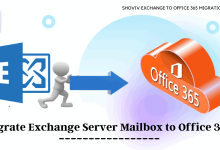What can an ATS do to improve and benefit recruiting practices?

The recruiting practices are managed in many companies by Applicant Tracking Systems (ATS). ATSs give you the freedom to manage your time efficiently by choosing only the candidates that match your job needs and schedule interviews accordingly.
In spite of Applicant Tracking Systems offer a range of features. In addition to CV screening and electronic candidate references handling, automated communication and compliance, an applicant tracking system can handle vast volumes of data, which makes it a go-to solution for many businesses looking to streamline their hiring process.
The following list of reasons for considering an applicant tracking system (ATS) (if you haven’t already) can help you to determine how it can make your talent acquisition process successful.
ATS Analytics provides insight into recruitment
At a glance, how useful would it be to know how your organizations are doing in terms of recruiting? The number of people hired during this time? By whom was the most hiring done? Are there any people working in specific positions?
A new generation of applicant tracking systems includes a dashboard that provides a real-time snapshot of your hiring status. The software captures and treats all the data automatically, processes it in the backend, and displays it in a structured manner through the dashboard. When you use an applicant tracking system (ATS) with robust reporting and analytics tools, you have a complete overview of the strength and weaknesses of your talent pool and your hiring process. By using these insights, you can make better hiring decisions and conduct course corrections where necessary.
Make recruitment more efficient with this essential tool
Recruiters and talent acquisition teams use applicant tracking systems as one of the most common tools. An applicant tracking system (ATS) can save an organization both time and money in the hiring process, source highly qualified candidates, build a talent pool for future hires, and increase revenue by automating the labour-intensive tasks normally performed by recruiters.
Employer Branding: Create a strong strategy
Employer branding determines whether an organization is seen as a popular and desirable employer or, if done poorly, as a disadvantageous one. Job seekers and the general public contribute their opinions and perceptions to it.
It is nearly impossible to control the perceptions of people, but organizations can still influence them. Establishing the employee value proposition is the first step in building an effective employer brand. It helps businesses better pitch their open positions to top candidates and reach their target audience.
The latest and most upgraded employer brand can be showcased by updating content and designing new promotional materials. Companies can make a great first impression when candidates interact with them if they have a strong employer brand strategy.
Communicate with applicants more effectively
In order for a candidate to be engaged, they expect to receive regular updates regarding the position. They may take their talent elsewhere if they feel you have abandoned them.
Your recruitment process will be more effective if you make better contact with applicants. A quick check-in to let people know you have no news can be all it takes to stay in touch.
Multiple companies are likely to be interested in the best candidates or at least recognize them. They won’t wait around long if they don’t know when they will hear from you and have not received an update.
You don’t have to restart your search if you stay at the top of your candidate’s inbox.
Application tracking integrations that are important
Your recruiting process can be redefined by the quality of applicant tracking integrations. Integrations allow you to incorporate tools and platforms you’re already using into your applicant tracking system, which can increase its effectiveness.
LinkedIn, Facebook, and Twitter are the three main social media integrations to remember when selecting an applicant tracking system. The ease with which you can post your job openings on these platforms is a time-saver.
In addition, email integration is essential. Through mass-mail campaigns, you can inform a large number of people that your organization is hiring by syncing your inbox with the applicant tracking system.
You can systematically order your candidates based on their overall scores and the requirements of the vacancy using the applicant ranking.
Growing Your Business With The Right People
Allowing candidates to approach you isn’t enough. It is important to find people who are not looking for jobs.
You might think that’s a waste of time. It doesn’t mean that someone wouldn’t take a new job if they weren’t actively looking for it. Could you please explain why you would limit your recruitment to a fraction of the world’s talent who is open to a new job? It is unlikely that everyone you contact will have an interest in moving on.
It takes a lot of preparation to woo someone away from their current job. Taking a job at your organization will be much more difficult if they haven’t heard of you and don’t know what you stand for.
Employer branding plays a role in this. It won’t happen overnight. These tips can help you build a strong employer brand that will help you attract long-term employees from top-quality companies.
Establish a culture of excellence in the workplace
The success of a recruitment practice lies in a company’s reputation as a place where people can do their best work. Similarly, having a dynamic and cheery workforce can attract people of great talent, just as a diversified workforce can.
It is easier than ever for candidates to research your company online and to form their own opinions about working there. The promotion of excellent work culture on your website can be a powerful recruitment strategy.
Analytics for Predictive Decisions
The recruiter’s role includes attracting, identifying, and converting top candidates to boost productivity at a company. It is also possible to make highly educated guesses about who will be the best for any role. In addition, predictive analytics enables you to make even more informed predictions by using data. These predictions are based on current and historical data.
A few areas it might measure include cultural fit, the likelihood of staying with the company, the ability to learn new skills, and the likelihood of becoming and staying engaged. As recruiters comb through the stacks of resumes, the company uses machine learning algorithms to sort resumes. Recruiters utilize computers’ recommendations even though the computers aren’t making the hiring decisions.



